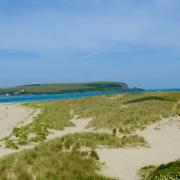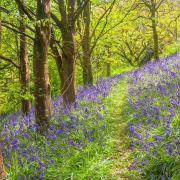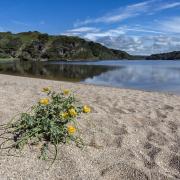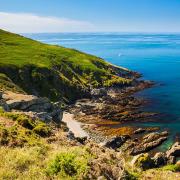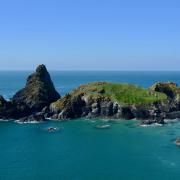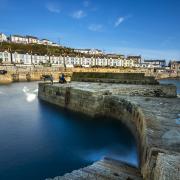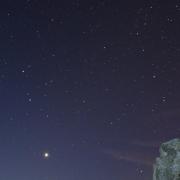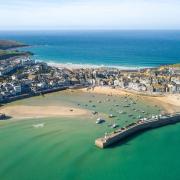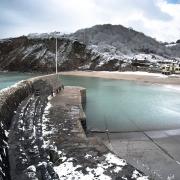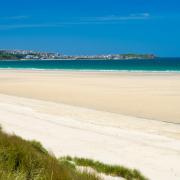In the October/November issue we look at the importance of World Heritage Status for Cornwall's mining landscape, since the region was awarded last year. The concept of World Heritage is embodied by a convention adopted by the United Nations Educa...
Travellers walking along platform 8 at London's Paddington station cannot fail to be impressed by a display of tall photographs that proclaim the World Heritage Status of the Cornwall and West Devon Mining Landscape. The images are interspersed with some thought-provoking statements such as: 'Cornish miners introduced football to Mexico when they emigrated there for work', or 'Food stored for ages used to be lethal. Our thin tin coating changed canned food forever'. These are not associations with Cornish mining that would normally spring to mind, so what is the background to these statements?
The concept of World Heritage is embodied by a convention adopted by the United Nations Educational, Scientific and Cultural Organisation (UNESCO) in 1972. This sought to preserve cultural and natural heritage around the world that was considered to be of outstanding value to humanity. In July 2006, Cornwall's mining areas achieved World Heritage Status, joining a league containing such wonders as the Pyramids of Egypt and the Great Barrier Reef in Australia.
Why does mining justify such an accolade? Over the years, mining has had a bad press and is associated in the public mind with pollution and disturbance of the landscape. The answer is that for the diverse needs of humanity it can be said that "if you can't grow it, you have to mine it". Even the glossy Cornwall Life magazine that you are reading has its mineral content in the form of clay paper fillers, which could well have originated in the moors behind St Austell. These clays are specially chosen for their molecular structure, which behaves like a sort of chemical Velcro, hooking securely onto the ink particles as the paper speeds through the printing presses.
In July 2006, Cornwall's mining areas achieved World Heritage Status, joining a league containing such wonders as the Pyramids of Egypt and the Great Barrier Reef in Australia
There is much more. Don't forget those who quarry for dull stuff like sand and aggregates for concrete and for our roads and railways. Look around the home at the bricks, slates, glass and tiles, even the paint - all derived from mined products. Spare a thought for the miners digging talc for our cosmetics. Mountains will have been moved to provide the copper, aluminium, lead and zinc that we use constantly and unthinkingly as to their origins, but on which our very way of life depends. Even our greedy, frivolous or aesthetic natures are pandered to by the mining of gold or attractively coloured gemstones that we are persuaded to think of as precious.
It comes down to the fundamental fact that man is an organism whose very survival depends on digging. We have been turning over the soil and rearranging the landscape for our agriculture on a planetary scale. The earliest farmers realised that tools and weapons of wood and bone scarcely met their needs, and flint and obsidian, and the early metals of the Bronze Age, all had to be dug for. In the quite localised spots on the planet where natural concentrations of minerals have been found, we have now dug considerably deeper. Cornwall has been a world leader in developing the skills required to obtain minerals from the depths, and in treating them to produce useable materials. We have been a great crucible of technical innovation and achievement, and the visible remains are all around, now being preserved and waiting to be discovered and understood afresh.
According to UNESCO, "Heritage is our legacy from the past, what we live with today, and what we pass on to future generations". World Heritage sites belong to all the peoples of the world, because of their universal importance and impact on our lives. Deborah Boden, the World Heritage Site Coordinator says, "World Heritage Status offers many potential benefits. Heritage is an important catalyst in economic regeneration, and conservation projects within the World Heritage Site have opened up new areas for recreation and cultural tourism, as well as supporting hundreds of jobs. The status provides an opportunity to target the international tourism market, and reconnect with the six million descendants of the Cornish mining diaspora."
The Cornwall and West Devon Mining Landscape comprises ten separate districts, from St Just in the west to the Tamar Valley, as shown on the map (pictured overleaf): St Just Mining District, The Port of Hayle, Tregonning and Gwinear Mining Districts (with Trewavas), Wendron Mining District, Camborne and Redruth Mining District, Gwennap Mining District (with Devoran and Perran), and Kennal Vale, St Agnes Mining District, The Luxulyan Valley and Charlestown, Caradon Mining District and Tamar Valley Mining District (with Tavistock).
All of these districts are readily accessible and between them they contain the entire spectrum, uniquely Cornish in character, of the buildings and infrastructure that can be attributed either directly or indirectly to mining activity. There are mine and ore treatment sites with their familiar, even iconic (for once that overworked and newly fashionable word is valid) engine houses. There is the transport infrastructure, pathways, tramways, the occasional canal, the remarkable incline leading up from the harbour at Portreath and other little industrial ports such as Hayle and Charlestown.
In quiet valleys and unexpected spots the remains of smelters, foundries and engineering works, gunpowder and fuse works - the so-called ancillary industries that supported the mines - can be found. Around the coast in particular, there are numerous classic rock exposures that promoted the early study of the new sciences of geology and mineralogy. What was brought up from underground was a bewildering variety of mineral species that led to the formation of internationally important mineral collections, such as the Rashleigh Collection, now housed for all to see in the Royal Cornwall Museum in Truro. There are the terraces of miners' cottages, and grand houses and richly planted gardens of the landowning aristocracy and mineral lords. Even religious buildings, from the humblest Methodist chapel to the 19th-century grandeur of Truro Cathedral, can trace their roots back to mineral wealth. Truro Cathedral in particular owes much of its magnificence to the largesse of a prominent mineral lord.
Cornwall was a world leader in developing the skills required to obtain minerals from the depths, and in treating them to produce useable materials
It can be argued that Cornwall already has a tourist industry, and the more familiar old mining sites such as Levant and Geevor are visited by large numbers of people each year. How will our lives be changed by the fact that we are now living amidst such globally acknowledged wonders? Part of the answer lies in the oxygen of publicity, with our mining districts now exposed to a global consideration.
According to Malcolm Bell, Chief Executive of South West Tourism, speaking at a first anniversary celebration event held in Truro in July 2007, "World Heritage Status is an amazing opportunity to tell the story, to locals and visitors alike, of the Cornish people at a time when mining was our biggest industry and our ancestors travelled the world. It's a great way to find out what life was like, what work was like and what happened when people left the county to seek work overseas."
Of more intangible value is the knowledge that we are all living amidst an internationally recognised treasure-house of heritage and those intangible values rub off and should generate a real feeling of pride - another good reason to live in Cornwall. Our World Heritage sites can be seen as superior to those that simply preserve ancient monuments which, however beautiful or dramatic, can have little impact on our lives beyond being the subject of an occasional visit or expression of wonder.
Ours are living sites that celebrate one of man's most basic activities, and are a veritable incubator of knowledge where we can learn from the triumphs and the mistakes of the past. Camborne School of Mines continues to send out highly skilled and much sought-after graduates to all parts of the world. Today, the whole world wants its mineral products to bring the millions out of poverty. The old adage that a mine is a hole in the ground with a Cornishman at its bottom could well be rejuvenated, with the newly qualified young fanning out from Cornwall to assist the world in obtaining its minerals in an environmentally sustainable manner.
Space does not permit detailed listing of all that is
to be found within our World Heritage landscape. Of particular value is the website www.cornishmining.org.uk, which has excellent sections on activities and places to visit, and useful maps of all the areas.





